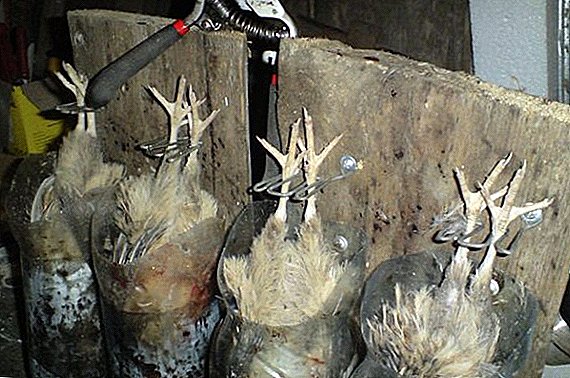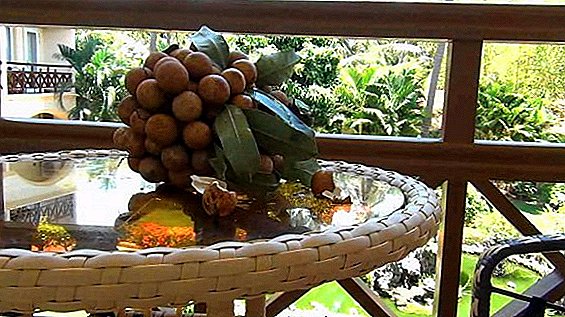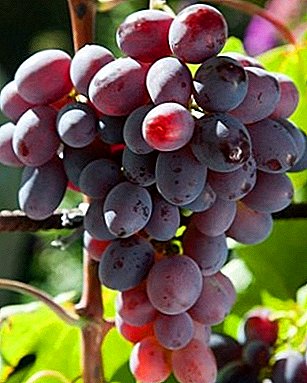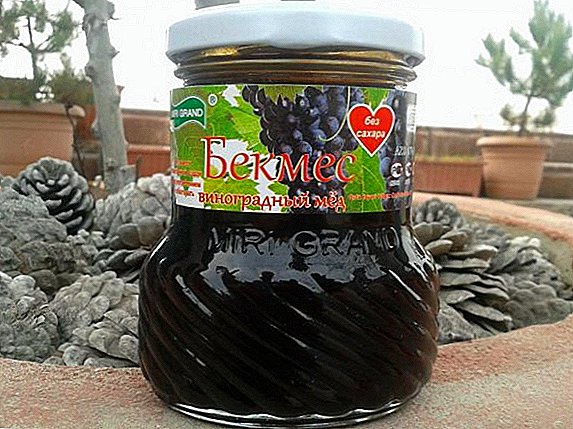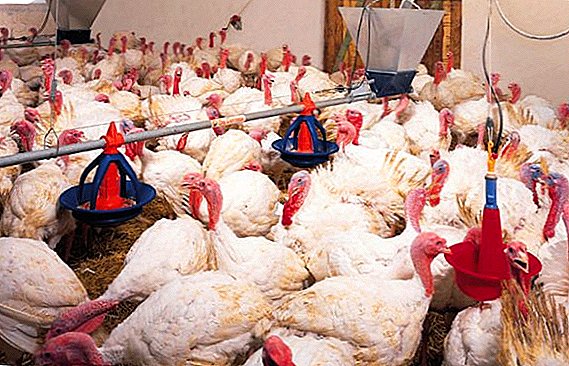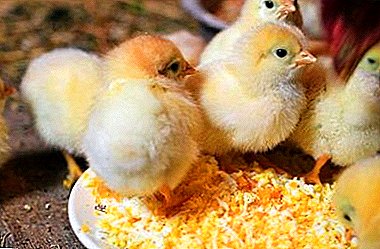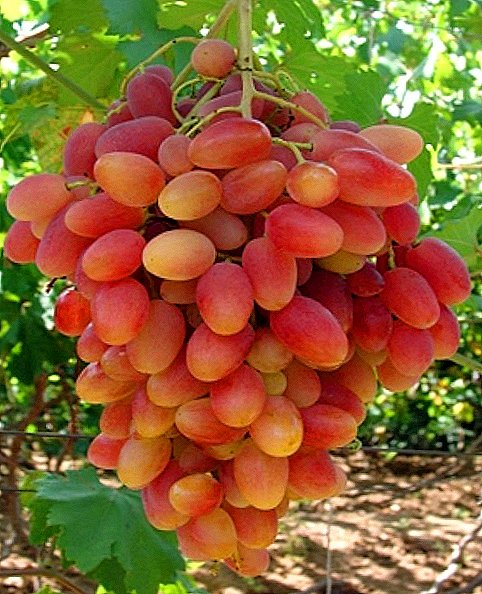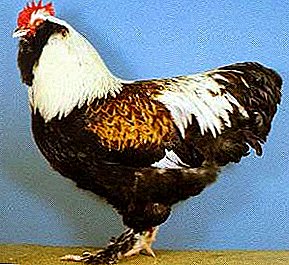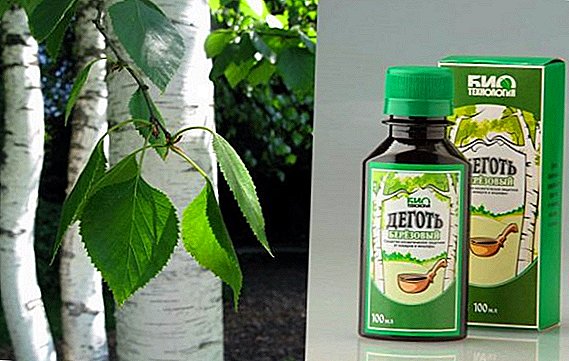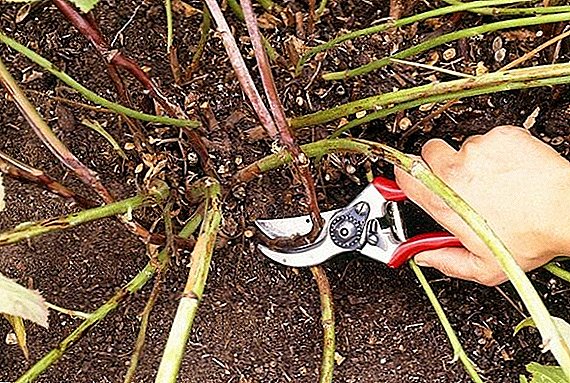
The whole difficulty of caring for blackberries lies in the time-consuming process of autumn pruning. For its quality it is necessary to know how to calculate the load on the branches of a handicraft plant and what influences this indicator.
Why you need to cut the blackberry in the fall
Blackberry is a shrub with a 2-year fruiting cycle. Therefore, the first year of his life, we are forced to create all the conditions for him to mature and successfully survive the winter.

By the summer the bush will be covered with buds and will give a good harvest, after which the flowering shoots will have to be removed. If this is not done, the shoots will thicken the shrub and will not allow young to mature. Berries will also be in the shade and lose their sweetness. In addition, the plant needs pruning in order to:
- to provide young shoots access to nutrients in the maximum amount;
- to increase the frost resistance of the shrub (an excessive amount of old shoots limits the access of the sun's rays to the middle of the bush);
- facilitate the process of preparing for the winter;
- stimulate future bloom;
- evenly distribute the load of the crop on the branches, that is, strengthen the bush.
How to trim a blackberry
Before cutting a shrub, it is necessary to correctly calculate the load on its shoots, taking into account the strength of the growth of the root system. Medium-sized blackberries can feed up to 8 lashes that bear fruit, that is, at least 8 and no more than 10 shoots should enter the winter. The reserve is needed if not all branches survive the winter.

When normalizing the load, they take into account the force of growth, as well as the intensity of root growth and other varietal characteristics. The number of shoots should be proportional to the intensity of fertilizing: the more often you apply fertilizer, the more loops you can leave. But with an excessive amount of applied agrochemistry and the tendency of the bush to thicken, the blackberry will be more susceptible to the occurrence of diseases and attacks by pests.
Important! Damaged pests branches should not be left for the winter, as they will not survive.Shorten the remaining loops by a quarter of the length (above the bud). This is done to strengthen the bush, lateral branching, so that there will be more fruit branches next year.
Check out such varieties of blackberry as "Giant", "Chester Thornless", "Thornfrey", "Ruben", "Black Satin".
Annual stalks
In the fall, annual stalks pinch immediately above the buds so that they go to the side shoots. For erect grades, they are clamped at a height of 1.9-2 m, for creeping ones - no more than 3 m.
It is also worth removing the young stems that did not have time to ripen. These are thin and short twigs that are not able to winter.
Biennial shoots
All biennial branches that have already finished bearing fruit must be removed. Cut them at the root.

Important! Do not leave stumps: a pest may settle on them or the process of decay may begin, which will kill the plant during the winter.All deleted branches (including damaged ones) should be burned so that diseases and pests do not spread over the site. After that, sawdust or peat is poured under a blackberry bush, which are able to retain moisture in the soil and protect the root system from frost.
Rules and features of the formation of bushes
Before the winter is to form the correct shape of the bush. Erect shape is more resistant to frost than creeping. But at the same time, it is more fragile and less flexible. Therefore, upright varieties are recommended to “dissolve” as a fan, and creeping ones should be divided into 2 parts: vegetative and fructifying.
Proper pruning is also important for fruit bushes: currants, gooseberries and raspberries.
Upright shape
To form a fan you need:
- In the spring to raise on the trellis shoots that survived the winter, in a vertical position directly above the rhizome.
- Launch young branches in lateral shoots directly from the growth point: tie up to the bottom wire parallel to the ground.
- In the fall, cut two-year central branches at the root, leaving the side lash.
- Young shoots that bend a little, leave in the amount of 8-10 pieces. The rest (weaker) remove.
- Scourge entering the winter, shorten and squeeze to the ground. Cover up
- In the spring to raise them again in a vertical position after they warm up and become more flexible.

Creeping form
The creeping form is more flexible, but less winter-hardy. To form it, you need to:
- Wind up on the trellis branches that survived the winter. Run them to the right relative to the growth point.
- Wrap on the left hand from the same point all the young.
- In the fall, remove all excess sprouts and remove the plant from the trellis. Expand the vine on the ground.
- Cut off all branches, except 8-10 healthy ones that have not yet been bearing fruits.
- Fold the whip and store in trenches for storage during the wintering period. Coverless varieties additionally cover with agrofiber and fix arcs.
Did you know? Fresh blackberries can quench their thirst, acting on the body as a febrifuge and fortifying agent.

How to cover the blackberry for the winter
Blackberries are quite susceptible to frost, so any of its varieties need shelter for the wintering period. Even frost-resistant varieties freeze in the absence of additional insulation at -20 ° C, all others - at -17 ° C.
Pre-Shelter Processing
You can only cover pre-prepared plants: formed, cut and properly laid on the ground (in the trench). By freeing the shrub from unnecessary shoots, you can additionally tie shoots entering the winter into bundles and bend them to the ground. It is advisable to fix them with hooks to the soil. This applies to creeping varieties that bend well. Branches can also be laid in trenches and secured with metal arcs.
Erect varieties require a special approach. To keep the branches intact after bending down, at the end of the summer period weights are tied to their tops. Under their weight, the shoots themselves tend to the ground. As soon as the plant gets rid of the foliage, the branches turn in even more and cover the bush.
You will probably be interested to learn more about pruning peach, plum, apricot, apple, pear, cherry, sweet cherry.
Before sheltering, it is also recommended to treat blackberries with copper sulphate or with a fungicide to prevent the development of fungus throughout the winter. In addition, the basal zone must be insulated with mulch and boards. Shoots should not lie on the damp ground.
Shelter rules
As material for shelter you can use:

1. Nonwoven fabric. It allows air flow and moisture. Choose a canvas with a width of 1.6 m and a density of at least 50 g / 1 square. m 2 addition or 100 g / 1 square. m - in 1 addition. Such material will last more than one season.
2. Polyethylene film. As an independent shelter - not the best choice. It can be a good addition to a more dense material. If they are well chosen in size and securely fixed at the edge, the moisture will not penetrate under the shelter.
3. Straw, foliage, sawdust. This is quite a popular option among gardeners, but it also has drawbacks. In the foliage and straw, mice are often found that grind the bush. This situation can be avoided if the blackberry is treated with a solution consisting of 0.5 liters of sunflower oil and 50 g of creolin. Sawdust can turn into a block of ice, absorbing moisture. In the spring to divide the fruit branches from the shelter will be almost impossible. And it will all melt for a very long time, so the bush will not be able to develop in full force. Of the organic best for shelter suitable corn. She will not be soaked with moisture and freeze to the bush.
4. Spruce branches can be used to shelter a bush. It does not like rodents, so the blackberry will be safe. A spring cleaning does not take much time. Lapnik is suitable both as an independent shelter, and as an insulation in combination with a synthetic covering material or film.
Did you know? There is blackberry honey - transparent, like water, with a pleasant taste. About 1 kg of honey is produced from 1 ha of blackberry plantations.After the wintering period is over, covering material is removed along with the arcs and hooks, if any. After warming, healthy branches become resilient, shiny and brown, and frozen ones become black, loose and fragile. Remove damaged areas and anticipate harvest from healthy shoots.



